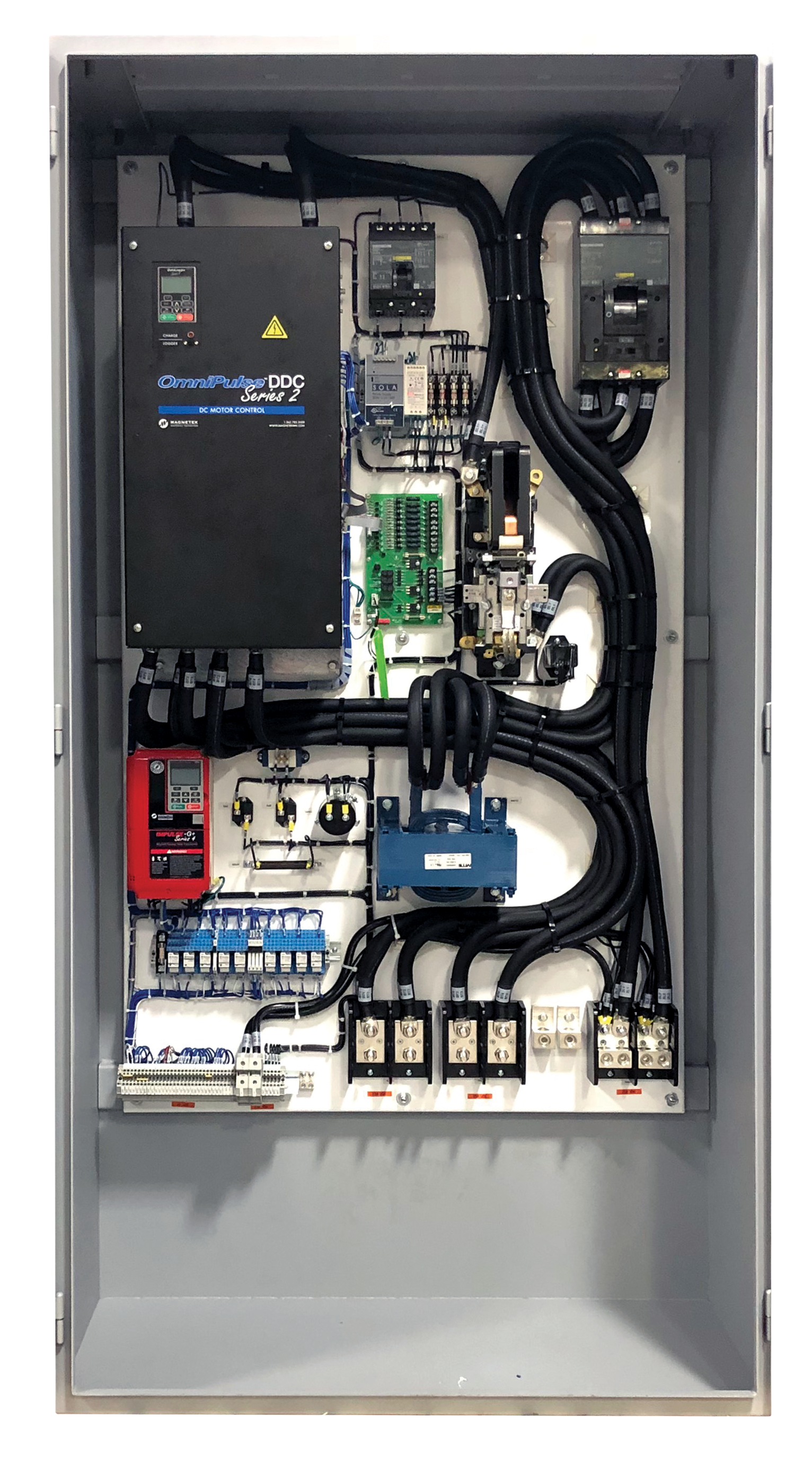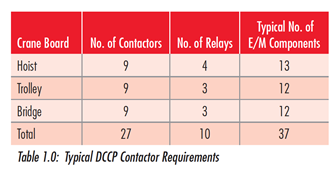The Road to Progress: Bringing DC Crane Control into the 21st Century
How Selecting DDC Over DCCP Control Benefits You
Direct Current Constant Potential (DCCP) control technology dates back to the late 1800s and the principles behind its simple design have not changed since then. However, just as we’ve progressed from the first steam or gasoline-powered automobiles to those “smart” cars that can track and alert drivers when it’s time for an oil change, so too have newer control technologies developed.

Digital DC drives (DDC) are designed to outperform traditional DCCP crane controls in operational areas including serviceability, maintenance and energy costs, and safety, for a wide variety of DC-operated overhead crane applications.
Fewer Components, Less Downtime
The fewer points of failure there are in a control system, the less often they can wear out or fail, requiring potentially expensive maintenance and downtime. Every speed point required for DCCP control also needs a contactor: usually five speed contactors, two main contactors, and one main dynamic braking contactor. The modular, solid-state design of DDC controls does not utilize contactor tips, coils, auxiliary contacts, mechanical interlocks, a directional contactor, or power resistors. The operational life of DC motor components, such as brushes, commutators, and insulation, is preserved longer due to programmed restrictions on armature current and Counter Electromotive Force (CEMF). No such restrictions exist with DCCP controls.

Reliable, Comprehensive Operation
DDC drives operate in a four-quadrant design (forward and reverse braking and forward and reverse motoring), while DCCP operates in two quadrants and relies on inefficient resistors for speed control. You get full control at all times with the four-quadrant design and eliminate the need for directional contactors and resistors in the lowering direction. Using digital microprocessor control with flexible software to enable smooth acceleration and deceleration, DDC drives provide improvements in motor speed and torque control over DCCP electro-mechanical crane controls. During load positioning, DDC controls offer repeatable and accurate speed settings for precise load positioning and the Micro-Speed™ feature offers even finer load positioning movement. And, due to the use of resistors for speed points with DCCP control, heat can cause variations over time, resulting in inconsistent load positioning.
WATCH THE INTRO TO MAGNETEK DC DRIVES WEBINAR
Easy Troubleshooting
Built-in diagnostics simplify troubleshooting a DDC control. Diagnostics include control and motor fault monitoring such as stall prevention, open armature, and field detection, which deliver status information to you more quickly, decreasing potential crane repair times. DDC drives also store fault history, which can be used to track frequency and sequencing of failures for improved crane reliability. DDC controls are also candidates for automation applications, which can integrate advanced diagnostic and analytic tools. DCCP controls do not have diagnostic capabilities, making troubleshooting more time consuming and expensive.
Energy Savings
A DDC control’s high-efficiency design regulates motor current and reduces line power demand to provide energy savings, while DCCP controls utilize resistors that consume additional line power. DDC controls operate in four quadrants, which allows regenerative energy to be consumed by other DC components on the grid. With the two-quadrant DCCP control, nearly all regenerative energy is consumed by the resistor bank and motor at different speed points.
VIEW THE OMNIPULSE DDC SERIES 2 DRIVE
Improved Safety
DDC provides many protection features, including built-in motor overload protection, motor ground protection, under/over voltage, motor continuity check, and a fail-safe, pre-charge circuit. While DCCP controls are capable of checking for armature continuity, they require an additional collector for redundancy. Motor series and field loss detection features of the DDC provide a fault to the drive and set the brake. If the speed input is lost on the DDC, the drive will operate up to the lower speed inputs. For DCCP, a loss of speed input could result in skipped speed points and high current and torque transitions or load drops. Load drops can occur when a speed input is lost because the control cannot deliver the required torque at the lower speed point.
Cost Savings
DDC controls are less expensive to install because they require fewer power conductors between external speed control resistors and can maximize catwalk space by decreasing control enclosure sizes by 30-50%. This, combined with energy regeneration, can decreases costs of both installation and overall system operation.
DOWNLOAD THE DDC VS DCCP WHITEPAPER
North America - EN










